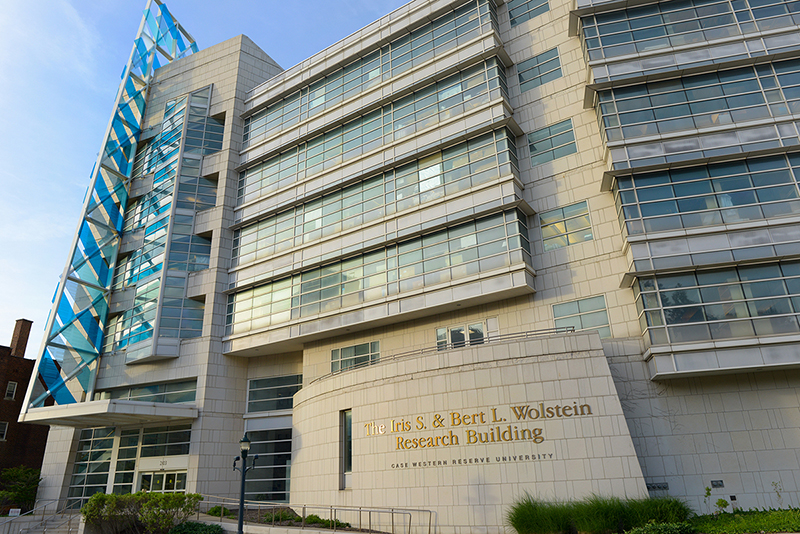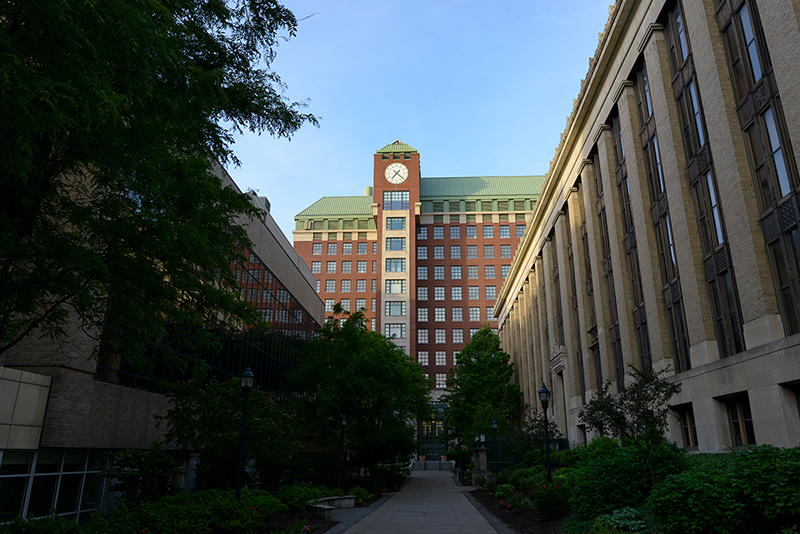The Case Transgenic and Targeting Facility is the sole transgenic core in the Cleveland area, serving investigators at CWRU, UHCMC, the Cleveland Clinic Lerner Research Institute, the VA Hospital, Metro-Health Hospital and Kent State University. The Transgenic Facility is competitive with transgenic cores at other academic institutions in success rates, turnaround and pricing. The transgenic and targeted mice we have made for our clients have been featured in over 280 publications since 2004, and include many publications in high impact journals. As a local service, it has the advantages of direct access to consultation and training, better pricing of services, and control of mouse pathogens.

Ron Conlon, Rachel Mann, David LePage, Weihong Jiang
The Director consults on scientific and strategic issues, while the core staff educates users on practical matters. The core has helped a number of labs with minimal or no experience transition into mouse genetic research programs.

The Wolstein Research Building
Rederivation to Specific Pathogen Free status is much cheaper locally than from commercial services. The shipment of mice by regular couriers from other academic cores (rather than the dedicated trucks used by commercial vendors) raises concerns about pathogen acquisition during shipping. The cost of services is comparable to those for internal users at other academic cores--typically external users are charged higher fees, and must pay for shipping of mice and materials.
Scientific and strategic consultations with the core director begin with discussion of the scientific goals and the best means of meeting those goals, whether through the creation of new transgenic or mutant mice, or through the use of existing strains from public resources. Investigators and their staff vary greatly in their level of expertise and experience with mouse genetics: users with little or no experience are strongly encouraged to meet with the core director for a scientific consultation.
The core director and staff train investigators in mouse genetics and biology and in the practical aspects of breeding and genotyping mice. The practical aspects are taught to investigators and their staff through direct interaction and through the core's web site. The practical information ranges from how to sex mice to the appropriate controls for tissue-specific knockouts. Relevant and up-to-date information is provided on the facility web site. The site hosts original information about mouse biology, genetics and breeding, conceptual information for which genetic technologies are best suited for experimental goals, the design of transgene and gene targeting vectors, and the timeline, costs, investigator effort, and expected results for each technology and protocol.
When orders are placed, a core staff member contacts the user to guide them through practical aspects, and request any necessary materials (maps, DNAs, assays to validate genotype). Users are sent a link to a tracking page on the web that keeps them updated on the progress of the job through automatic updates from the core database.

The Biomedical Research Building
The Director, Manager and staff members each have over 10 years experience in their respective roles providing transgenic and targeting services.
Dr. Ron Conlon is a developmental biologist and mouse geneticist. He has directed his own research laboratory in the CWRU Department of Genetics and Genome Sciences since 1994, and is currently an Associate Professor. He became Director of the Genetics Transgenic Facility in 2000. In the past, his research focused on embryonic development of the mouse, and made extensive use of transgenics, gene knockouts, knockins and conditional alleles. In addition, his laboratory made contributions in the field of chromosome engineering, developing new technologies for generating large deletions by combined gene targeting, site-specific recombinases and other technologies. Dr. Conlon's current research focusses on translation of somatic gene-editing into therapeutics for cystic fibrosis.
Dr. Rachel Mann trained as a reproductive biologist, and received her PhD in the laboratory of Dr. John Nilson in 1999 in the Department of Pharmacology at CWRU. Her thesis work evaluated the impact of elevated luteinizing hormone in transgenic mice on oocyte, embryo and maternal reproductive health. She worked in human assisted reproductive technologies before becoming Director of the Pharmacology Transgenic Facility in 2001. She is an Instructor in the Department of Pharmacology in the Case School of Medicine. In 2004 she became manager of the Case Transgenic and Targeting Core Facility.
Dr. David LePage trained in genetics and received his PhD in Dr Conlon's laboratory in 2001 in Genetics. In his thesis research, Dr LePage developed new methods to generate large genomic deletions in mouse embryonic stem cells through a novel combination of gene targeting and site-specific recombinase techniques. David joined the Department of Genetics transgenic facility in 2001.
Weihong Jiang trained in Biology and Medical Genetics, receiving his MS from Shanghai Second Medical University. He joined the Department of Genetics transgenic core in 2000.

The Frank Gehry-designed Peter B Lewis Building of the CWRU School of Business
Case Western Reserve University School of Medicine was founded in 1843. Six of the first seven women to become MDs were trained at CWRU SOM. In 1956, CWRU SOM was the first to offer the dual degree MD-PhD program. We are located on the CWRU campus between the Cleveland Clinic, University Hospital Cleveland Medical Center and the Louis Stokes Cleveland VA Medical Center in University Circle of Cleveland. University Circle is the cultural center of Cleveland, home to the Cleveland Museum of Art, the home of the Cleveland Orchestra's Severance Hall, the Cleveland Museum of Natural History and the Museum of Contemporary Art Cleveland.